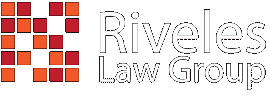By Lauren Mack
Companies seeking to raise capital – whether through selling equity, convertible notes, or any other security – in the United States must navigate a complex landscape of securities laws and regulations. They are subject not only to federal regulations, but also the laws of each state in which an investor (or soon-to-be investor) resides. The general rule under federal law is that securities must be registered with the Securities and Exchange Commission (“SEC”) unless the issuer is claiming an exemption from registration. Because registration of securities is a complicated and expensive process, small and mid-sized companies typically rely on an exemption, the most popular of which are the private placement exemptions contained in Rules 504, 505, and 506 of Regulation D.
Rule 504
Under the Rule 504 exemption, a company can raise up to $1 million during a twelve-month period from an unlimited number of investors. Investors may be either accredited or non-accredited and do not need to be provided with any specific information about the company, although it is generally advisable to do so anyway. Accredited investors are those who have a large net worth such that they can afford to lose their investment.
This is exemption is rarely used however, due to the $1 million cap and the fact that it does not exempt the issuer from any state law requirements where the securities are sold. This means that every time the issuer sells or intends to sell to a resident of a new state, it must comply with the securities registration or exemption requirements of that state, also known as “blue sky” laws.
Rule 505
Rule 505 allows for up to $5 million to be raised during a twelve-month period from accredited investors and up to 35 non-accredited investors. Any non-accredited investors must be provided with certain information and risk disclosures, typically in the form of a Private Placement Memorandum. Like Rule 504, Rule 505 is also rarely used because it requires compliance with the securities laws of each state.
Another drawback to the Rule 504 and 505 exemptions is that the amount of an offering will be “aggregated” with any other offering conducted under the exemption within the past twelve months. This means that all of the Rule 504 or 505 offerings conducted during the twelve-month period, when taken together, must comply with the applicable exemption. For example, if a company offers securities in the amount of $4 million under Rule 505 in January, that company would not be able to conduct another Rule 505 offering for more than $1 million until the following January, as the two offering amounts added together would not comply with the Rule 505 offering cap.
Rule 506
Rule 506(b) is the most frequently relied upon exemption. This is because it allows for an unlimited amount of funds to be raised from an unlimited number of accredited investors and up to 35 non-accredited investors. Like under Rule 505, the non-accredited investors must be provided certain information about the company. Unlike Rule 505, all non-accredited investors must be sophisticated, which means that they have sufficient knowledge and experience in financial and business matters such that they are capable of evaluating the merits and risks of the prospective investment. Because of the potential liability associated with selling securities to non-accredited investors, many issuers choose not to sell to non-accredited investors at all.
Rule 506 also contains a second exemption under 506(c), which was created by the JOBS Act. Unlike the other Regulation D exemptions, Rule 506(c) allows for issuers to engage in “general solicitation”. This means that issuers relying on Rule 506(c) can advertise the sale of their securities to the general public without having a “substantial pre-existing relationship” with the purchaser. The tradeoff, however, is that all of the investors must be accredited and their status as an accredited investor must be verified by the issuer.
Beyond the ability to raise an unlimited amount of funds, the main key advantage to using the Rule 506 exemptions is that they preempt state laws. This means that the states cannot require an issuer to register or qualify for a state exemption, but can only require them to submit a filing notifying the state that a resident has purchased securities sold under the Rule 506 exemption and impose a filing fee. This makes complying with state blue sky laws significantly easier and less time consuming.
An additional perk for companies raising funds under Rule 506 is the ability to file blue sky notices online via the North American Securities Administrator’s Association’s Electronic Filing Depository (the “EFD”). With the exception of only a handful of states (including New York), an issuer can easily electronically file blue sky notices for several states via the EFD all at once.
Which exemption from registration to use when raising capital should be carefully considered in conjunction with legal counsel, and take into account the amount anticipated to be raised within the next year, the type of investors the company anticipates attracting, and the time and effort the company is willing to put into state securities law compliance.
Share this Post
